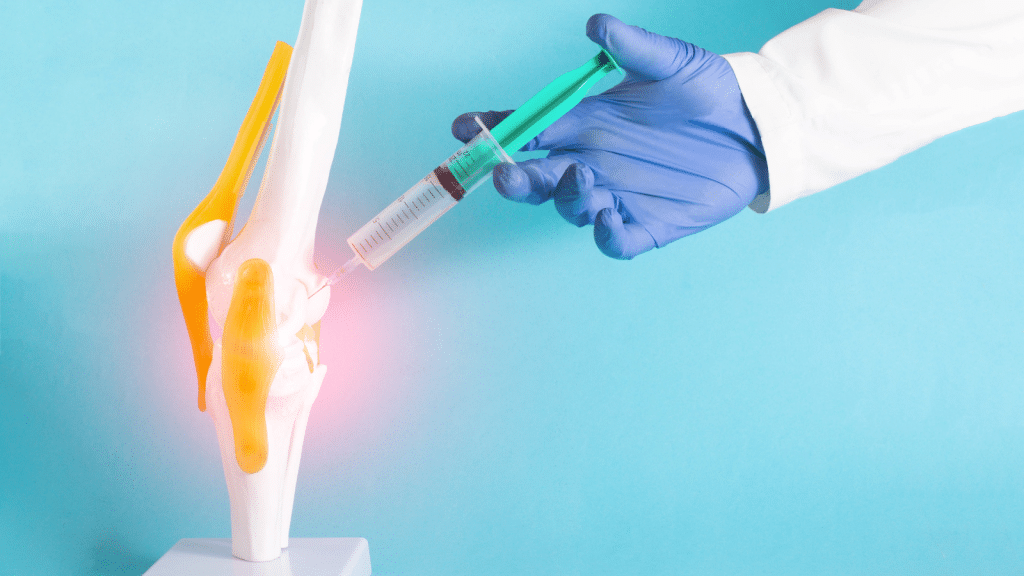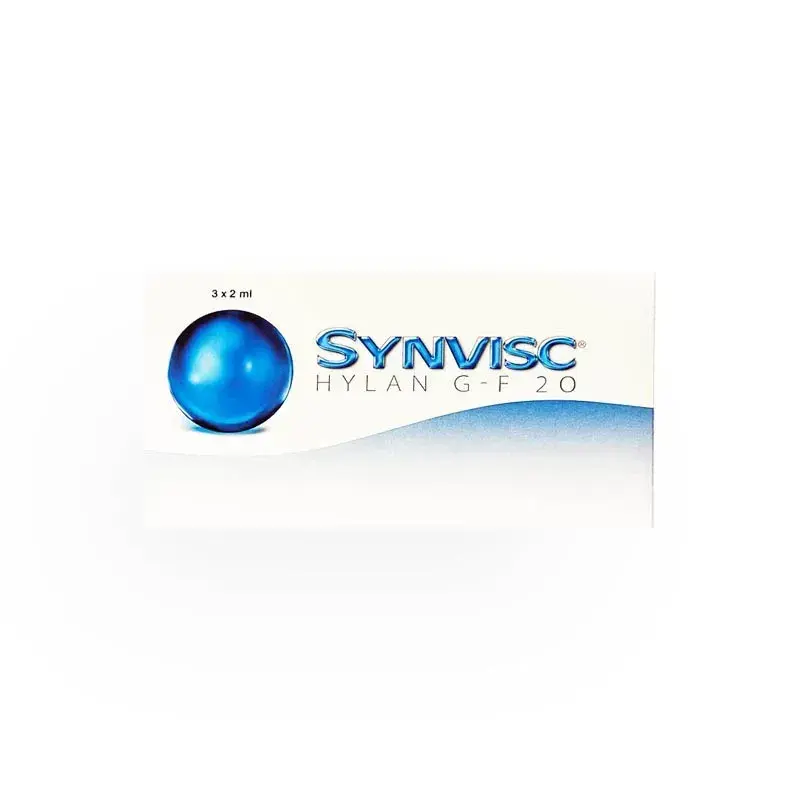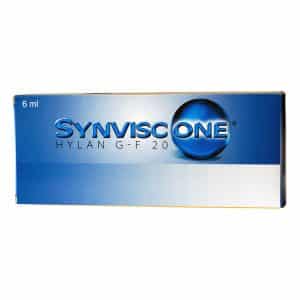Knee osteoarthritis affects approximately 250 million people worldwide, with the prevalence expected to rise due to aging populations and increasing obesity rates. This underscores the urgent need for effective treatments to manage the symptoms of this debilitating condition.
Synvisc, a viscosupplement, mimics the natural fluid in the knee joint, providing lubrication and shock absorption. It is specifically designed to reduce pain and improve mobility in patients with knee osteoarthritis who have not found relief with other treatments.
In this article, we will explore Synvisc knee injections, their benefits, and why they are a leading option for treating knee osteoarthritis.
Key Takeaways
- Synvisc is a viscosupplement designed to treat knee osteoarthritis by mimicking natural joint fluid, providing lubrication and shock absorption.
- A single Synvisc injection can provide up to six months of pain relief, improving mobility and reducing discomfort.
- Synvisc is often recommended for patients who haven’t responded to first-line treatments, like pain relievers or physical therapy.
- The treatment is primarily used for knee osteoarthritis but can also be administered off-label for conditions like shoulder pain.
- Mild side effects such as swelling or pain at the injection site can occur, but they typically subside within a few days with rest and ice application.
About: Medical Spa RX provides medical practices with premium products at the best prices. If you’re looking to buy Synvisc wholesale for your practice, the sales representatives at Medical Spa RX can give you guidance.
What is Synvisc and How Does it Work?
Synvisc (Hylan G-F 20) is a viscosupplement designed to treat knee osteoarthritis by improving joint lubrication and reducing pain. Osteoarthritis causes the natural synovial fluid in the knee to break down, leading to discomfort and stiffness. Synvisc works by mimicking this natural fluid, providing cushioning and making movement smoother and less painful.
The hylan polymers in Synvisc act like a lubricant, reducing friction between the bones and enhancing shock absorption within the joint. This mechanism helps restore joint function, allowing patients to move more freely. It is often used when other treatments, such as oral medications, have not provided adequate relief.
A single injection of Synvisc can offer pain relief for up to six months, significantly improving mobility and reducing discomfort. Many patients experience a marked improvement in their ability to carry out daily activities, with fewer symptoms of knee osteoarthritis after receiving Synvisc.
The Synvisc Knee Injection Process
Before receiving a Synvisc injection, your healthcare provider will review your medical history and current symptoms to ensure this treatment is right for you. If you have already tried other osteoarthritis treatments with limited success, Synvisc may be recommended.
While primarily used for knee osteoarthritis, it is also sometimes administered off-label, such as in Synvisc for shoulder pain. Your doctor may ask you to avoid certain medications like blood thinners leading up to the procedure to reduce the risk of complications.
What to Expect During the Injection
The injection itself is straightforward. After cleaning the area around your knee, your doctor will inject Synvisc directly into the joint using a fine needle. The active Synvisc ingredients include hylan A and hylan B polymers, which mimic the natural fluid in your joint to provide lubrication and cushioning.
The process usually takes only a few minutes, and patients can typically return to daily activities shortly afterward. Sometimes, the doctor may remove excess fluid from the joint before administering the injection to ensure optimal results.
Potential Side Effects And How To Manage Them
Some patients may experience mild side effects after the injection, such as swelling, pain, or warmth at the injection site. These Synvisc side effects are generally temporary and can be managed with over-the-counter pain relievers and ice packs. To allow the knee to recover, it’s important to avoid high-impact activities for at least 48 hours post-injection.
If you experience severe pain or signs of an allergic reaction, contact your healthcare provider immediately.
Expected Synvisc Outcomes and Post-Treatment Care
Some patients may experience mild pain or discomfort after receiving a Synvisc knee injection. To reduce swelling and ease discomfort, doctors often recommend applying ice to the injection site. These symptoms typically subside within a day or two, and most patients can resume light activities shortly after.
Rehabilitation and Physical Therapy Post-Injection
Maintaining knee movement after the injection is essential for optimal recovery. Doctors frequently suggest starting physical therapy soon after the procedure to help strengthen the knee and improve flexibility. This rehabilitation process aids in restoring mobility and reduces the likelihood of future pain, allowing patients to return to their regular activities more comfortably.
Long-Term Benefits and Follow-Up Care
To maximize the long-term benefits of Synvisc, follow-up care is crucial. Regular doctor visits help assess the knee’s progress and determine whether additional injections are needed. The treatment plan may vary based on the patient’s response to Synvisc and overall health. For some, repeated injections might be part of ongoing osteoarthritis management to maintain pain relief and joint function over time.
Who is a Candidate for Synvisc Knee Injections?
Synvisc knee injections are typically considered for patients with knee osteoarthritis who have not responded well to first-line treatments, such as pain relievers, physical therapy, or corticosteroid injections. They are an ideal option for those looking for a non-surgical solution to manage ongoing pain and improve mobility.
Synvisc is particularly effective for individuals who meet the following criteria:
- Moderate to severe knee osteoarthritis that has not improved with other treatments.
- Patients seeking to delay or avoid knee replacement surgery.
- Those experiencing persistent pain or stiffness that limits daily activities, such as walking, climbing stairs, or exercising.
- Individuals who prefer non-invasive treatments with longer-lasting results (up to 6 months of relief per injection).
Contraindications and Potential Risks
Not everyone is a suitable candidate for Synvisc injections. The treatment may not be recommended for:
- Patients with infections or skin conditions near the injection site.
- Individuals allergic to hyaluronic acid or bird proteins (since Synvisc is derived from chicken combs).
- Those with severe joint infections or vascular disorders in the knee.
- Pregnant or breastfeeding women, as safety data is limited in these groups.
Conclusion
Synvisc knee injections offer an effective solution for individuals suffering from knee osteoarthritis, providing up to six months of pain relief and making daily movement easier. For those seeking a non-surgical option to manage knee discomfort, Synvisc can be a valuable treatment choice.
Choosing the right care for your knees is essential for long-term health, and Synvisc may play a key role in helping you regain mobility and improve your quality of life.
FAQs
1. What is Synvisc, and how does it work?
Synvisc is a viscosupplement that mimics the natural fluid in your knee joint, providing lubrication and cushioning. It reduces friction between the bones, easing pain and improving joint mobility for those with knee osteoarthritis.
2. How long does a Synvisc injection last?
A single injection of Synvisc can provide pain relief for up to six months.
3. Who is a good candidate for Synvisc injections?
Synvisc is ideal for individuals with moderate to severe knee osteoarthritis who have not responded to other treatments like pain medications, physical therapy, or corticosteroid injections.
4. Can Synvisc be used in joints other than the knee?
While Synvisc is primarily used for the knee, it can also be administered off-label for conditions such as shoulder osteoarthritis.
References
Smith Y. What is Osteoarthritis? News-Medical. Published March 17, 2021. https://www.news-medical.net/health/What-is-Osteoarthritis.aspx
Osteoarthritis Action Alliance. (n.d.). Osteoarthritis prevalence and burden. Retrieved from https://oaaction.unc.edu/oa-module/oa-prevalence-and-burden/
Drugs.com. (n.d.). Synvisc: Uses, dosage, and side effects. Retrieved from https://www.drugs.com/synvisc.html























